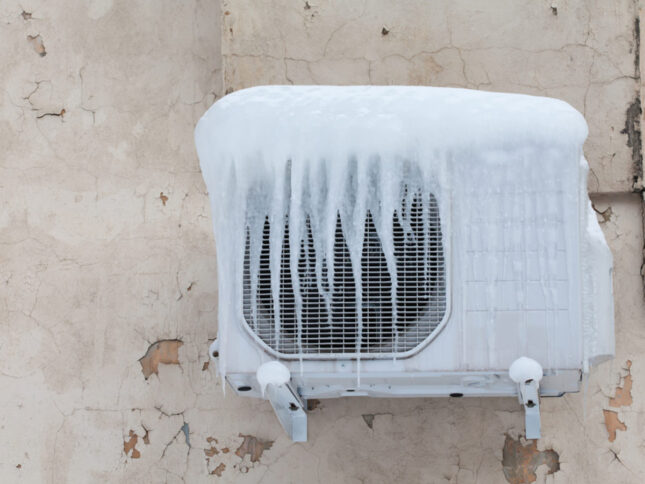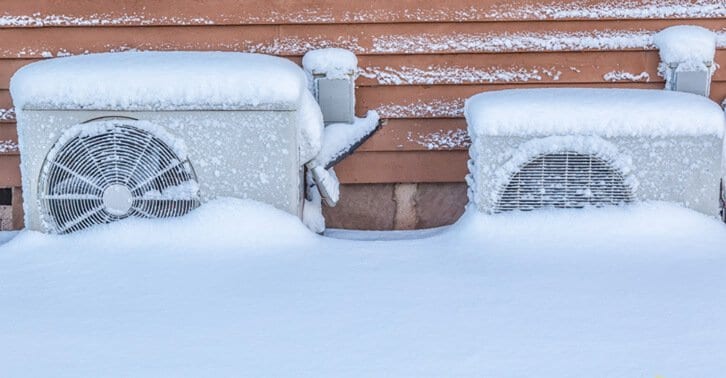What to I Do If My AC Pipe Is Frozen? - Key Tips for Restoring Functionality
What to I Do If My AC Pipe Is Frozen? - Key Tips for Restoring Functionality
Blog Article
Are you interested in insight on Have a Frozen AC Line? Here’s How to Fix It?

Introduction
Discovering that your a/c pipeline is frozen can be worrying, specifically throughout hot summer months when you count on your ac unit one of the most. Recognizing what to do in such a situation is important to stop further damage to your air conditioning system and ensure your convenience inside.
Recognizing the Causes
A number of aspects can add to the cold of an air conditioner pipeline. Understanding these causes can aid you resolve the problem properly.
Absence of Airflow
One common root cause of a frozen air conditioner pipeline is inadequate airflow. When the airflow over the evaporator coil is limited, it can cause the coil to go down below freezing temperature, bring about ice development on the pipeline.
Low Refrigerant Levels
Insufficient refrigerant degrees in your a/c system can also lead to a frozen pipe. Reduced cooling agent degrees can create the stress in the system to go down, bring about the freezing of wetness on the evaporator coil.
Winter Conditions
In colder environments, freezing temperatures outside can add to the freezing of AC pipelines. If your AC device is not properly shielded or if there are leaks in the ductwork, cool air can infiltrate the system, triggering the pipeline to ice up.
Dirty Air Filters
Unclean or clogged up air filters can limit air movement in your air conditioning system, leading to different concerns, consisting of a frozen pipeline. It's essential to change or cleanse your air filters regularly to ensure proper airflow and protect against ice build-up.
Signs of a Frozen Air Conditioner Pipe
Recognizing the indications of an icy air conditioner pipe is important for punctual activity.
Decreased Airflow
If you discover a considerable decline in air movement from your vents, it can indicate a frozen pipe.
Ice Buildup on the Pipe
Visible ice accumulation on the refrigerant line or the evaporator coil is a clear indication of a frozen a/c pipe.
Odd Sounds from the Unit
Uncommon sounds, such as hissing or bubbling, coming from your AC system can signal that there's ice existing on the pipe.
Immediate Actions to Take
When confronted with a frozen a/c pipe, it's important to act swiftly to avoid further damages to your cooling system.
Shutting off the air conditioning
The initial step is to switch off your air conditioner to stop the system from running and intensifying the problem.
Looking for Blockages
Evaluate the area around the indoor unit for any obstructions that may be obstructing air flow, such as furnishings or drapes.
Defrosting the Pipe
You can make use of mild methods like placing towels taken in cozy water around the frozen pipe to assist thaw it gradually.
Safety nets
Taking safety nets can help avoid future events of an icy a/c pipe.
Routine Maintenance Checks
Set up routine upkeep consult an expert HVAC professional to guarantee that your AC system is running efficiently.
Altering Air Filters
Frequently replace or cleanse your air filters to avoid airflow constraints and preserve optimum efficiency.
Insulating Exposed Pipes
If your air conditioner pipelines are subjected to cold temperature levels, think about shielding them to stop freezing throughout winter months.
Looking For Professional Help
If DIY techniques fail to settle the concern or if you're uncertain concerning just how to proceed, it's ideal to seek aid from a certified HVAC technician.
When DIY Methods Fail
If your attempts to thaw the pipeline or address other concerns are unsuccessful, it's time to call in a specialist.
Relevance of Hiring a Professional HVAC Technician
A certified HVAC specialist has the proficiency and tools essential to diagnose and fix issues with your air conditioning system securely and efficiently.
Verdict
Handling an icy AC pipeline can be a frustrating experience, however knowing exactly how to react can aid minimize damage and bring back comfort to your home. By recognizing the reasons, recognizing the indications, and taking timely activity, you can effectively deal with the issue and protect against future events.
What to Do If Your AC Line Is Frozen
Make Sure All Supply and Return Air Vents Are Open
If you notice problems with airflow, the first thing you should do is check your supply and return vents. Supply vents distribute clean, conditioned air throughout your home. As this air becomes stale, it’s pulled into the return vent, where it’s reconditioned before being sent back out through the supply vent.
When these vents are closed, air won’t flow in the home. Before examining your AC, check the vents in every room and ensure they’re all open.
Check for a Dirty Air Filter
Another possible cause of limited airflow is a dirty air filter. Your air conditioner’s filters catch elements you don’t want to breathe in, such as dirt and dust. Over time, filters can become clogged, ultimately blocking air from flowing in and out. The lack of airflow can then cause the entire coil to freeze and will completely restrict any air from moving through it. The AC may need to be powered off for one to two days to allow the coil to thaw after replacing the filter to allow proper functioning of the unit. This debris can also accumulate on your AC’s evaporator coil, requiring a more serious repair. In general, air filters should be cleaned regularly (about every two weeks).
Assess Your Outdoor Unit
In addition to checking your AC, assessing the outdoor unit is a good idea. Also known as the condensing unit, it works with your interior unit to release heat outside. An issue with the outdoor unit can result in rising internal temperatures.
Overgrown Shrubs or Clogged Leaves
From leaves and twigs to shrubs and debris, there’s no shortage of outdoor elements that can accumulate around your condensing unit. When these elements get lodged inside the unit, they can block airflow. Fortunately, removing the blockage can solve the problem.
Sounds of a Broken Fan
Shrubs and leaves aren’t the only things that can impede your outdoor unit’s airflow. If the fan is broken, the unit won’t be able to properly get rid of heat — which means the internal temperature won’t go down. First, make sure the fan is spinning. If it is, check for the following sounds of a broken fan:
Buzzing Rattling Screeching Hissing Clicking Preventative Measures
Nobody wants to deal with a frozen AC line. In addition to causing problems with your air conditioner, they require professional repairs. On the bright side, there are preventative measures you can take to help ensure this issue doesn’t arise in the first place.
https://www.coopergreenteam.com/blog/what-to-do-if-ac-line-frozen

I came across that page about Have a Frozen AC Line? Here’s How to Fix It when browsing the search engines. Make sure you take the opportunity to share this article if you appreciated it. We recognize the value of reading our article about Air Conditioner Frozen? How To Fix your Frozen AC Line.
Instant Quote Report this page